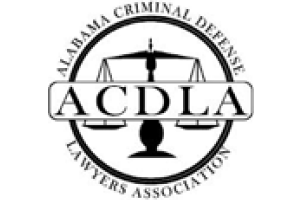Alabama Driver License Law
Introduction: Alabama driver licensing and statutes to enforce driver license laws were first codified into state law in 1927 with the Alabama legislature first enacting the “Rules of the Road” Act. Alabama driver license law with mandatory record keeping and driver testing was established when the Alabama Department of Public Safety was created by legislation in 1939, establishing the Driver License Division within the Department of Public Safety. In that year, mandatory driver license testing for new applicants as well as a statutory method to suspend or revoke the driver license was codified, along with the implementation of the seven digit driver license numbering system (now eight digits as of 2003). Starting in 1939, the first driver license numbers were issued to Gov. Frank Dixon and his wife as numbers 0000001 and 0000002, and issuance began in numerical sequence from the date of issue in September 1939 to the present. The Alabama driver license number is unique to that individual and will never be re-issued or re-used by another person.
In the early 1980s, all driver records were converted from paper files to computer entry data files, and that process allowed both law enforcement personnel and agencies and court personnel to quickly retrieve driver license information. The Alabama Uniform Commercial Driver License law was enacted in 1989 to comply with the federal mandate to establish a uniform and comprehensive driver license law for all commercial vehicle drivers in the United States. Implementation of that Act placed an increased demand upon driver records, driver testing, and supervision of court conviction data. The Administrative License Suspension Act took effect in 1994 to quickly identify the alcohol-impaired driver arrested for DUI and to forthwith suspend the driver license of that individual prior to court adjudication.
In the 1980s, and continuing to this date, driver license law has become increasingly complicated and technically detailed. In many respects, the possession of an Alabama driver license is no longer a question of the ability to operate a motor vehicle, but compliance with a number of social interests, such as non-payment of child support, under age 21 possession of alcohol, failure to maintain automobile liability insurance, failure to settle an automobile accident claim, and a substantial number of other issues.
At any particular time on any particular day, about 15% to 16% of Alabama driver licenses are “suspended” or “revoked” usually as a result of court action. The most common reason – in fact the greatest number of suspensions – is simple failure to attend court (“failure to appear”) for a traffic citation. This type of suspension action can easily be cleared if the driver will comply with the court order and settle the citation. In other cases, however, the suspension or revocation order is mandated as result of traffic conviction, and many of these type offenders will continue to operate a vehicle for years in an unlicensed status in flagrant violation of the law.
Driver License Terms: There are several driver license terms that are specific to driver license law and have a specific legal meaning. These terms are:
- Driver License: A government document issued by the Alabama Law Enforcement Agency to operate a designated class of motor vehicle (or vessel if the licensee holds a ‘V’ endorsement). Only the Alabama Law Enforcement Agency may issue a valid driver license, subject to state law and administrative regulations, and no court or other government agency may issue a “permit” or “license” to operate a motor vehicle. [With the exception of a military vehicle operated during military service.]
- Privilege to Operate: The term “privilege to operate” is generally synonymous to holding a driver license, although that term includes individuals who have never formally been issued a driver license. Such unlicensed individuals may have their “privilege” suspended or revoked in the same manner as a license holder.
- Suspension: The suspension of a driver license or privilege to operate means the individual may not lawfully operate a motor vehicle on the public highways in the state of Alabama. Suspension of driver license or privilege is the temporary or limited removal of a driver license or privilege. Suspension actions may be discretionary or mandatory, depending on the statute authorizing the suspension action. Reinstatement of driver license following a suspension order is generally accomplished upon completion of specified compliance requirements, most commonly the statutorily required “reinstatement fee”.
- Revocation: Revocation of driver license is the complete and full removal of driver license or privilege to operate. Revocation is nearly always the result of a conviction of a serious traffic offense and is generally a mandatory duty of the Secretary of Law Enforcement. After serving the revocation period, the affected individual must make formal application for a reinstated driver license after serving the required period of revocation. At the discretion of the Department, the individual may be required to undergo full driver license examination, both the written exam and the driving exam.
- Cancellation of Driver License: A “cancellation” is the annulment or termination by formal action of the Secretary of Law Enforcement of the person’s driver license because of error or defect in the application process. (Generally, the applicant failed to disclose a pre-existing suspension or license removal action in another state and the Alabama Law Enforcement Agency did not discover this pre-existing condition until the National Driver Registry issued notice to the license state.) A cancellation is neither a suspension nor a revocation, but a type of license removal that requires the disqualified licensee to clear the previous state before being eligible to hold an Alabama driver license.
Driver License Classification: With the enactment of the Alabama Uniform Commercial Driver License Act in 1989 to conform to federal law mandating all states enact a comprehensive and uniform system of testing and enforcement of commercial motor vehicle law, the state of Alabama adopted driver license classification by alphabet letter. These are:
- Class A – a combination commercial motor vehicle with a combined gross weight 26,000 pounds or more [the traditional tractor-trailer with a weight limit of up to 80,000 pounds]
- Class B – a single commercial vehicle with a weight limit of 26,000 pounds or more [a ‘straight-truck’ commercial vehicle]
- Class C – a single vehicle with a gross weight of less than 26,000 pounds that: 1) transports 16 or more passengers including the driver; or 2) transports hazardous waste [school bus, church bus, or a hazardous/bio-waste vehicle]
- Class D – a non-commercial motor vehicle of less than 26,000 pounds gross weight [passenger car, pick-up truck, RV]
- Class M – a motorcycle license only
- Class V – a vessel license only
While Class A, B, and C are commonly referred to as a “CDL” license, in actuality, the Class A, B, or C is an endorsement to the Class D standard operating license. A person cannot obtain a Class A, B, or C endorsement unless that individual first holds a valid Class D license, and maintains a Class D in valid status. If the Class D license is suspended or revoked for any reason, the Class A, B, and C endorsement is invalid. Conversely, if a CDL endorsement is “disqualified” (the term used which is analogous to “suspension”), the underlying Class D is usually not affected, and the person may continue to operate a standard motor vehicle with a Class D license.
Driver license law is highly technical and complex, consisting of statutory law, administrative regulations, and case law decisions. Most statutory driver license law is found in Title 32, Chapter 6 which contains both the standard Class D driver license law (sections 32-6-1 through 32-6-19) as well as commercial driver license law (section 32-6-49.1 through 32-6-49.24). In addition, Chapter 5 and 5A contain important legislative statutes dealing with driver license suspension or revocation actions. In that regard, section 32-5A-195 is an especially important statute as most of the mandated suspension and revocation requirements as well as judicial review is provided under that statute.
Important Driver License Statutes:
- Driver License Required: Every person who operates a motor vehicle on a public highway of this state must hold a valid driver license issued by the Alabama Law Enforcement Agency. Every new resident to this state must obtain an Alabama driver license within thirty (30) days of establishing residency. [Code section 32-6-1] The only persons exempt from this requirement are:
- Any person operating a federal government owned vehicle in official service
- Any person driving a farm machine temporarily moved on the highway
- A nonresident who has in immediate possession a valid driver license issued by the home state
Restrictions on Drivers Under 18 years of Age: The state of Alabama employs a “graduated” driver license process for persons aged 16-18. [See, Code sections 32-6-7.2 through 32-6-7.5] The graduated driver license process is complicated and contains a substantial number of exceptions and exemptions.No Driver License in Possession: Every person operating a motor vehicle on a public highway must have in their immediate possession a valid Alabama driver license for the class of vehicle authorized. The driver license must be presented to a law enforcement officer upon demand. [See, Code section 32-6-9]Limited Driver Permit (“Hardship Driver License”): In the 2018 legislative session, by Act 2018-289, the state of Alabama authorized a “hardship” driver license provision for any person suspended or revoked who could not obtain “reasonable transportation.” The implementation of the issuance standards “…shall be subject to rules, terms, regulations, restrictions, and eligibility requirements established by the agency…” Code section 32-6-12.1(b). One category of individuals statutorily ineligible to obtain a hardship driver license is [any] “person who has been adjudicated or convicted of driving under the influence…” Code section 32-6-12.1(d). An additional restriction is any person who is currently revoked must serve out the mandatory revocation period before making application for a limited driving permit for the duration of the hardship driver license. The maximum period to maintain a “hardship” driver license is for four years.Driving While Suspended or Revoked: Driving while suspended or driving while revoked are classified as a “serious traffic offense” and require a mandatory court appearance by the defendant. The DWS or DWR citation cannot be paid by mail or by the internet “AlaPay” website. Violation of DWS or DWR carries a fine of not less than $100 and up to $500 and the possibility of up to 180 days incarceration at the discretion of the trial court. [See, Code section 32-6-19] In addition, if convicted of DWR, the Secretary of Law Enforcement shall enter a new revocation order based on the date of conviction, and the revocation order shall remain in effect for six months until the revocation period has expired.
Uniform Commercial Driver License Act: The Alabama commercial motor vehicle driver license requirements are located at Code section 32-6-49.1 through 32-6-49.24. These code sections track the Code of Federal Regulations [49 C.F.R. 383] for obtaining a valid commercial driver license. No person may operate a commercial motor vehicle on a public highway without first holding a valid Alabama operator’s license (Class D) with the appropriate endorsement for the type of vehicle being operated. A removal of the CDL endorsement is termed a “disqualification” (not a “suspension”). The disqualification period may be for as short a period as 60 days or up to a lifetime disqualification, depending on the type of violation that resulted in conviction. For example, a conviction of two speeding violations within a three-year period of 15 m.p.h. or in excess of 15 m.p.h. over the posted speed limit while operating a commercial motor vehicle will result in a 60 day disqualification, while a single conviction of DUI, whether in a private vehicle or commercial vehicle, will result in a one year disqualification and two such DUI convictions will result in a lifetime disqualification.
Miscellaneous Driver License Laws and Related Statutes:
- Motor Safety Responsibility Act: The Alabama Safety Responsibility Act is an automobile insurance law that first became effective in 1951. The statute is an “after the fact” requirement that the motorist must show proof of financial responsibility (ordinarily in the form of an auto insurance policy in effect at the time of the accident in the amount of $25,000/$50,000 or other form of proof) or face the suspension of driver license if proof is not filed with the Alabama Law Enforcement Agency within 30 days after the accident or collision. If no proof is filed, the Secretary of Law Enforcement shall suspend the driver license and vehicle registration of such person 60 days later. The suspension will remain in effect for two years, or until proof of financial responsibility is filed.
- Mandatory Automobile Insurance Act: The Alabama Mandatory Automobile Liability Insurance Act was enacted by the legislature in 2000. This act requires every person who operates a motor vehicle on the public highway to have in effect an automobile liability policy issued to that specific vehicle of not less than $25,000/$50,000 and proof of such policy maintained in the vehicle by the possession of an “insurance card.” Such insurance card must be presented to law enforcement officer upon demand when operating a motor vehicle. [See, Code sections 32-7A-1 through 24.]
- Implied Consent Law: The Alabama Implied Consent law was first enacted in 1969 as a civil sanction to enforce the then ‘DWI’ law in effect. That Act stated any person who operated a motor vehicle on a public highway in this state must submit to chemical testing [i.e., breath testing] upon direction of the arresting law enforcement officer. Under the original 1969 Act, any person who refused to submit to the breath test would have their Alabama driver license suspended for 90 days. The original Implied Consent law applied only to alcohol testing for the consumption of alcoholic beverages. In 2021 the Alabama legislature, by Act 2021-498, significantly amended and expanded the Implied Consent statute [Code section 32-5-192] from alcohol only to “any impairing substance or substances within a person’s system.” In addition, the newly revised statute removed urine from testing and replaced urine with “oral fluid” samples – a new concept in Alabama law enforcement. The Act authorizes multiple tests (blood, breath, & oral fluid) at the direction of the arresting officer. Additionally, the statute authorizes the use of a “court order” [i.e., search warrant] to obtain a blood sample if the arrested subject refuses to consent to testing. One of the most significant changes was the revised Act expanded the Implied Consent law from alcohol only to “alcohol or any impairing substance.”
- Administrative License Suspension Act: The Alabama Administrative License Suspension Act [Code section 32-5A-300 through 309] was first written and entered law in 1994 but has been subsequently revised over the past thirty years. This Act is the procedural mechanism to enforce the Implied Consent law by identifying the motorist who, after arrested for DUI, tests 0.08% breath test result (or greater test result) or refuses to submit to testing of their blood, oral fluid, or breath. Under the newly revised Implied Consent test process, the motorist may be ordered to submit to breath testing, oral fluid testing, or a blood draw. If the motorist refuses any of those three test methods, the arresting officer shall prepare the official document, termed an “AST-60 form”, and submit the form to the Alabama Law Enforcement Agency for summary driver license suspension. If the motorist does submit to breath testing, and the result of the breath test is 0.08% or greater, the officer shall take possession of the driver license and issue an AST-60 form as a temporary driving permit, valid for 45 days until the suspension takes effect or the suspension is withdrawn. If the motorist refuses testing, whether breath, oral fluid, or blood, the arresting officer shall forthwith seize the driver license and issue an AST-60 form. [Note: The seizure of the driver license is applicable only to Alabama driver licenses and has no application to an out of state driver license.]









